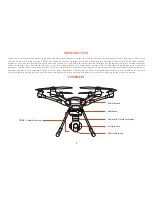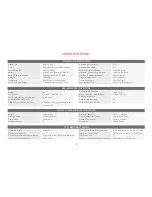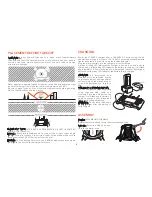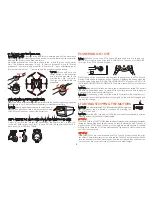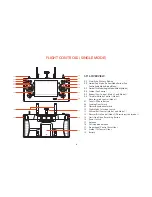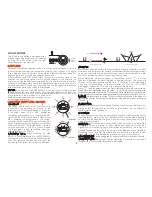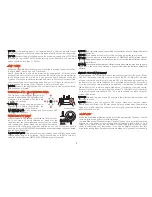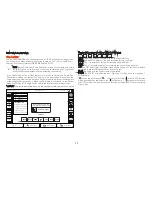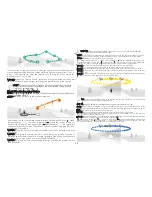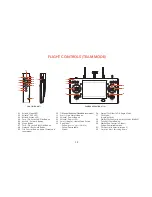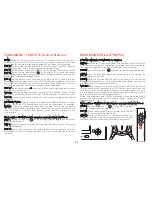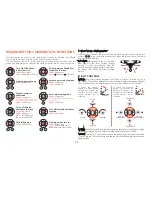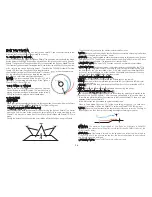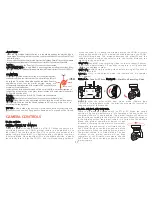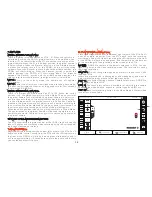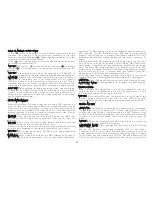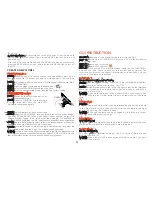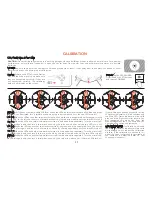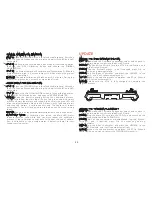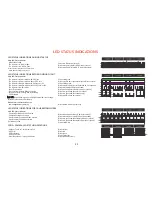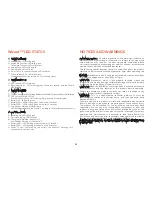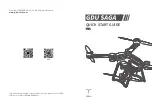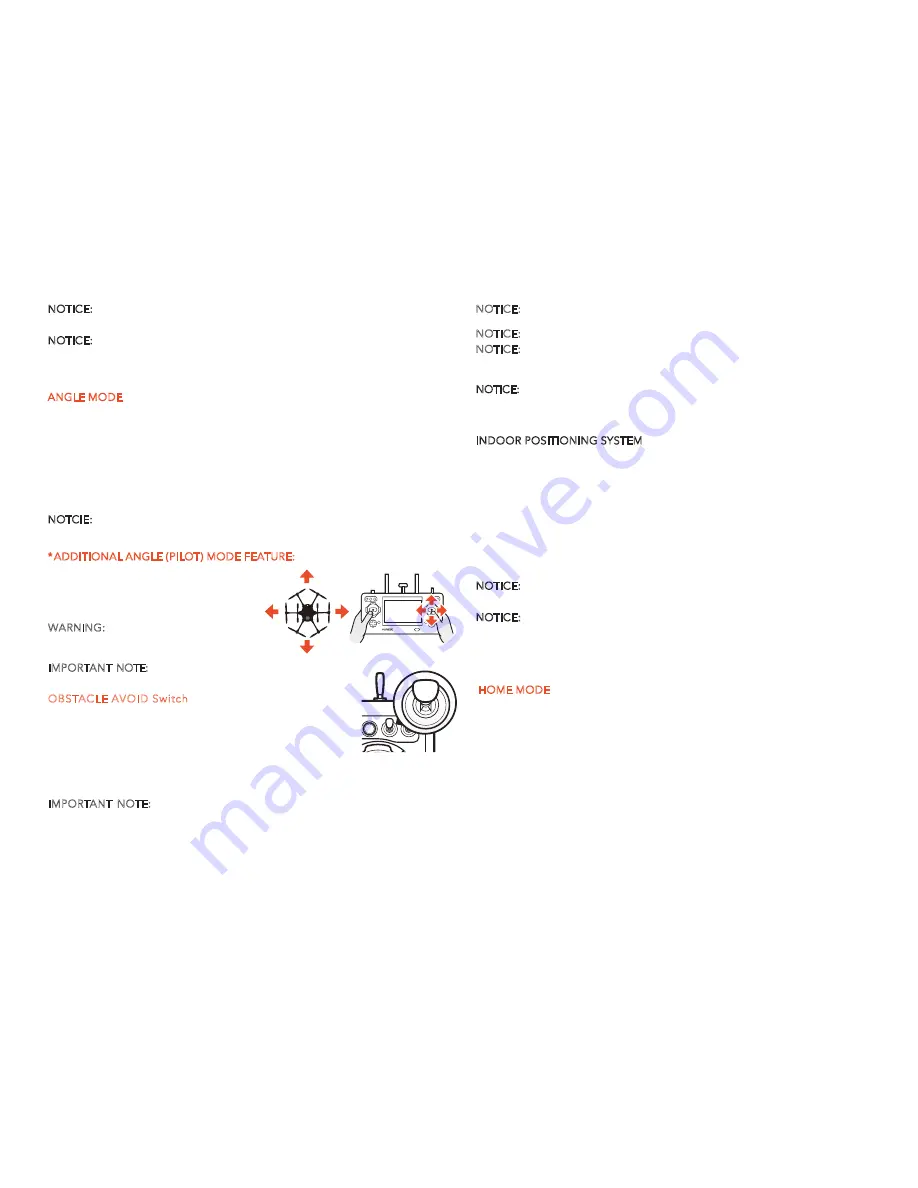
9
ANGLE MODE
When the Flight Mode selection switch is the middle position, Typhoon H will be
in Angle Mode, also known as in Pilot Mode.
Angle (Pilot) Mode is the mode preferred by experienced RC/drone pilots
because Typhoon H will move in the direction the control stick is pushed relative
to the front/nose of the aircraft. So if you push the right-hand stick to the left
Typhoon H will bank toward the left side and move to the left. This means if the
front/nose of Typhoon H is pointing away from you it will move to the left, but if
the front/nose is pointing at you Typhoon H will move to the right.
NOTCIE: When in the Angle Mode, the aircraft will stop in front of the obstacle
with realsense activated.
*ADDITIONAL ANGLE (PILOT) MODE FEATURE:
The Typhoon H will automatically hold its
position (with a suitable GPS signal/lock) and
maintain a level attitude when the both
joysticks are centered.
WARNING: If you do not properly control
Typhoon H in Angle (Pilot) Mode the
aircraft may crash or even ‘fly away’.
IMPORTANT NOTE: Crash damage and ‘fly aways’ are NOT
covered under warranty.
OBSTACLE AVOID Switch
With sustainable GPS locked
,
the realsense can be activat-
ed in any mode by being switched on except for the
condition that the copter descend vertically at low speed
with landing gear down. When the realsense is activated,
the front motor LEDs will blink white and the icon on the ST16 screen will be
solid green. If the OBSTACLE AVOID is switched on, but the function can't be activated,
then the icon will be yellow.
IMPORTANT NOTE: The environment requirement such as flight track might
change depending on the situation. Only when the icon on the ST16 screen is
solid green, it means the OBSTACLE AVOID function is activated.
Mode 2 shown
HOME MODE
When the Flight Mode selection switch is in the bottom position, Typhoon H will be
in Home (also known as Return to Home) Mode.
In Home Mode the GPS connectivity will fly back Typhoon H in a straight line in the
direction of the pilots’ current location, and automatically land within 13-26 ft
(4-8m) of the pilot. This can be very helpful for beginning pilots who aren’t quite
ready to land Typhoon H themselves. It can also be helpful for pilots that lose
orientation during flight. Simply activate Home Mode until Typhoon H automatically
TS01
TS02
TS03
TS04
00 : 35 : 25
D/R 0˚
System Setting
Channel Setting
Model Select
9
12.6V
FSK
WIFI
Roll 120˚
Pitch 0˚
300M
125km/h
TS05
TS06
TS07
TS08
GPS
VOL
FSK
WiFi
CHA
POS
CHA
POS
NOTICE: If the landing gear is not lowered down in Smart and Angle modes
during landing, the aircraft can't descent less than 6.6 feet (2 meters) from the ground.
NOTICE: When turning off the Realsense, the maximum speed of the TYPHOON
H should be less than 37.3MPH. When turning on the Realsense, the maximum
speed should be less than 11.2 MPH.
NOTICE: The realsense can only detect the front obstacles, but can't detect the lateral
and rear obstacles.
NOTICE: The speed of the aircraft will be limited with realsense activated.
NOTICE: For the most up-to-date information of OBSTACLE AVOID, please visit the
corresponding product page at www.Yuneec.com or contact the nearest Yuneec office or
authorized distributor.
NOTICE: It is recommended to turn off Obstacle Avoid when landing. If the landing gear is
lowed down, the aircraft won't recede in angle mode when the realsense detect the
obstacle.
INDOOR POSITIONING SYSTEM
In Angle Mode, the TYPHOON H will automatically activate the IPS or not. When
GPS can't be locked, if the flight control activate the IPS, the Main LED indicator
of the aircraft will be solid purple, and the GPS will display being searching on
the Remote control, which indicates IPS is activated automatically. At the same
time, the aircraft can't be switched to Smart Mode, Home Mode, Task Mode and
OBS AVOID, ONLY remain in Angle Mode even if switching the mode switch.
When using IPS to lock the position of the aircraft, TYPHOON H can also hover at
its current altitude automatically. The IPS is most suitable for indoor flight or
without GPS locked.
NOTICE: When flying in door with IPS activated, the pilot should be cautious and
not to fly too fast.
NOTICE: When using IPS without GPS locked, make sure that the indoor
illumination is sufficient. The IPS may not be able to position when the aircraft is
flying over highly reflective surfaces or over highly repeated surface texture
(such as the same color).
Summary of Contents for RS-V1.2
Page 1: ...USER MANUAL RS V1 2 ...



